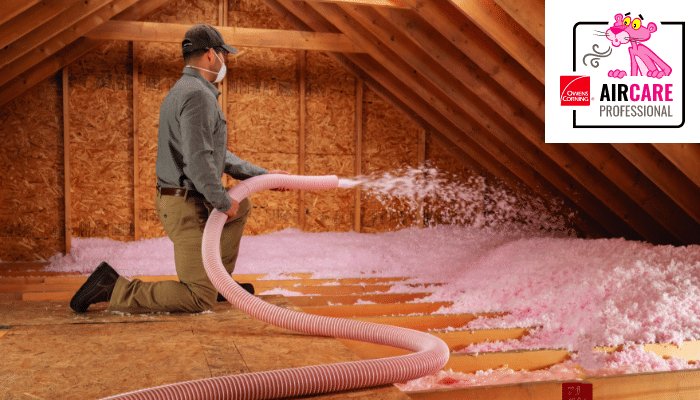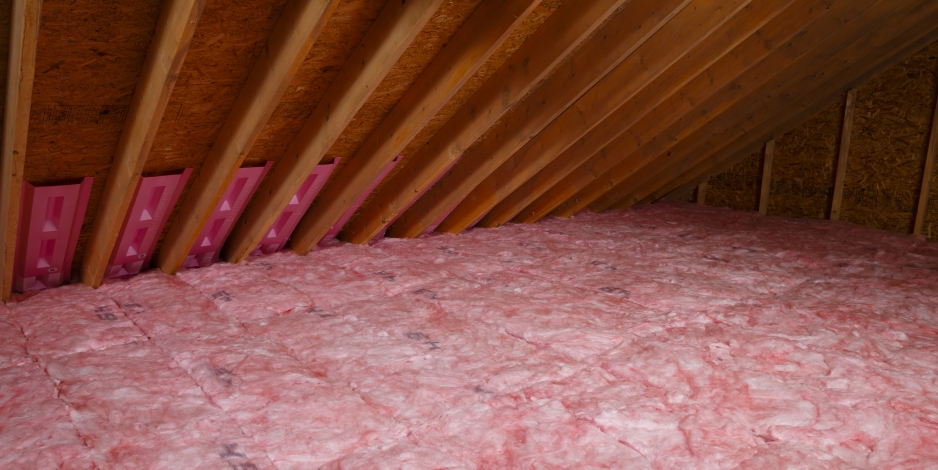Discover the Different Kinds Of Attic Insulation and Their Special Advantages for Your Home's Power Efficiency

Fiberglass Insulation
Fiberglass insulation is one of one of the most frequently used products for attic insulation as a result of its outstanding thermal efficiency and cost-effectiveness. Composed of tiny glass fibers, this material effectively traps air, producing a protecting barrier that assists keep regular indoor temperature levels. Its high R-value per inch makes it particularly effective at standing up to warm transfer, which is crucial for energy preservation in homes.
Installment of fiberglass insulation is reasonably straightforward, commonly offered in batts or loose-fill kinds, accommodating different attic room arrangements. Furthermore, it is non-combustible and resistant to moisture, minimizing the danger of mold and mildew growth. This resilience adds to its durability, making fiberglass a sensible long-lasting investment for house owners.
In addition, fiberglass insulation is often produced from recycled products, which enhances its eco-friendliness. The material can also add to soundproofing, minimizing noise transfer in between rooms. While it is important to wear safety equipment throughout installment to stay clear of inflammation from the fibers, the overall advantages of fiberglass insulation, consisting of energy savings and ecological considerations, make it a preferred selection for enhancing attic performance and advertising a comfy living environment.
Spray Foam Insulation
Spray foam insulation is a very effective choice for attic room insulation, recognized for its superior air sealing and thermal performance. This ingenious insulation material is made up of a mix of isocyanate and polyol resin, which, when combined, expands rapidly to load spaces and cavities in the attic room room. Its capability to abide by different surfaces ensures a continual obstacle versus air leakages, substantially minimizing warm loss throughout colder months and heat gain throughout warmer seasons.
Among the crucial benefits of spray foam insulation is its high R-value per inch, which suggests it supplies exceptional thermal resistance in a reasonably slim application. This is specifically beneficial in attics where room is commonly limited. Additionally, spray foam can aid reduce moisture build-up, lowering the danger of mold and mildew development, which can be damaging to both the structure and interior air top quality.
While the preliminary cost of spray foam insulation might be more than conventional alternatives, its long-lasting power savings, paired with increased convenience and enhanced home worth, make it a worthwhile financial investment for house owners seeking improved power efficiency. Attic Insulation DFW. In general, spray foam insulation attracts attention as an effective option for enhancing attic insulation
Cellulose Insulation

Cellulose insulation is a popular selection for attic insulation, primarily made up of recycled paper items treated with fire retardants. This eco pleasant option is known for its superb thermal efficiency, effectively lowering heat transfer in both summer and cold weather. The dense make-up of cellulose allows it to fill spaces and gaps in attic rooms, giving a seamless obstacle against air leakages.
One of the substantial benefits of cellulose insulation is its capacity to withstand mold and mildew and bugs, owing to the fire retardant treatments made use of during production. Additionally, it flaunts a high R-value per inch, which translates into remarkable energy performance. Homeowners can expect lower heating & cooling costs as an outcome of boosted insulation.
Installment is generally accomplished with blowing loose cellulose right into the wanted location, enabling a effective and fast procedure. This approach likewise decreases disturbance to the existing structure. Additionally, cellulose insulation has a relatively reduced environmental effect, as its production process utilizes recycled products, adding to lasting building methods.
Rock Wool Insulation
Among the different alternatives for attic room insulation, rock woollen, also referred to as mineral wool, stands out due to its impressive thermal and acoustic performance. Made from all-natural or recycled materials, rock wool is developed by melting rock and rotating it right into fibers, causing a product that supplies exceptional insulation buildings.
One of the substantial advantages of rock woollen insulation is its high R-value, which suggests its effectiveness in resisting warm circulation. This characteristic not only enhances power effectiveness however likewise adds to maintaining a comfy indoor temperature level year-round. In addition, rock wool is naturally fire-resistant, making it a safer alternative for homes as it can stand up to heats without melting or releasing toxic fumes.
Additionally, rock woollen insulation masters soundproofing capacities, efficiently lowering sound transmission between areas and from outside sources. This makes it a suitable option for home owners seeking a peaceful living atmosphere. Moreover, rock Get the facts wool is moisture-resistant, assisting to stop mold development and keeping the structural honesty of the attic room space. Generally, rock woollen insulation offers a comprehensive solution for boosting power performance, safety, and comfort in property setups.
Glowing Barrier Insulation
Radiant obstacle insulation acts as an efficient option for lessening warm transfer in attics, specifically in warmer environments. This kind of insulation works by mirroring radiant warm away from living spaces, consequently lowering the quantity of heat that goes into a home during hot weather condition - Attic Insulation DFW. Generally composed of a highly reflective material, such as aluminum foil, glowing obstacles are mounted in attic rooms, facing the roof, where they can intercept inbound heat from the sunlight
The key advantage of glowing barrier insulation is its capacity to reduced air conditioning expenses. By showing heat as opposed to absorbing it, glowing obstacles can assist preserve an extra secure indoor temperature level, minimizing the work on a/c systems. This efficiency converts right into reduced power costs and enhanced convenience for homeowners.
In enhancement to power financial savings, glowing obstacles can additionally add to improved interior air high quality. By reducing warm accumulation, they assist minimize humidity degrees, which can protect against mold and mildew development and boost general air flow. When set up appropriately, radiant barrier insulation can be an indispensable addition to any energy-efficient home, making it a worthy consideration for property owners wanting to enhance their attic room insulation technique.
Final Thought
In verdict, recognizing the numerous kinds of attic room insulation-- fiberglass, spray foam, cellulose, rock wool, and radiant barriers-- makes it possible for house owners to make informed decisions regarding energy performance. By choosing the proper insulation product, considerable decreases in power expenses can be achieved, along with enhancements in interior convenience.

In final thought, comprehending the numerous types of attic insulation-- fiberglass, spray foam, cellulose, rock woollen, and glowing obstacles-- enables home owners to make educated choices relating to energy effectiveness.